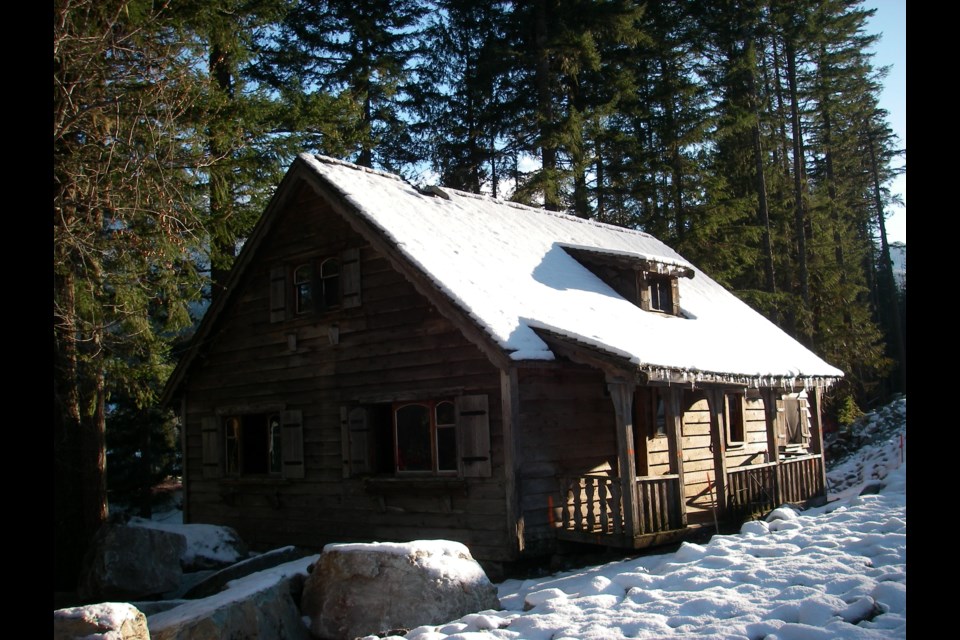It’s official: Hillman House, one of Whistler’s oldest and most historic buildings, will be demolished.
Elected officials on Tuesday, Feb. 4 voted to amend the site-specific zoning for an incoming housing project at 5298 Alta Lake Road. That gives the developer the option to replace the historic 1940s cabin with a picnic shelter or gazebo in a community park at the site that recognizes the building's historical significance, using materials reclaimed from or similar to the original cabin. The amended bylaw also requires the developer, the Michael Hutchison-led Empire Club Development Corp., to make a cash contribution to the Resort Municipality of Whistler’s (RMOW) Recreation Works and Services Reserve Fund that will be used for heritage preservation and improvement. The combined value of the contribution and the cost of building the replacement amenity structure must be no less than $350,000.
One of the conditions on the mixed-use housing project’s approval was a requirement for the developer to relocate the cabin to a community park on the property and upgrade its foundation and exterior building envelope so it could be safely used and occupied between May 1 and Sept. 30 every year. However, given the building’s poor condition—it has no water or insulation, limited electrical service, and bare stud walls—staff estimated it would cost at least $415,000 to restore it. Officials debated several options to preserve the cabin, including relocating it to Rainbow Park alongside several other historic cabins dating to the 1920s, but ultimately found the price tag too high.
“It certainly is a decaying building, and this is the right path,” said Councillor Arthur De Jong, who recently visited the cabin. “When I look at our budget process recently, we have to find opportunities where we can save, where we don’t have to commit or spend. So, I think this is really good work, and finding a mid-path that still celebrates the heritage but puts the money where we really need it.”
What isn’t clear is exactly when the cabin’s interior was gutted. The building was occupied by renters in recent years, and Mayor Jack Crompton said he believes the developer stripped the interior at some point in the past two years.
Built in the mid-’40s by lumberman Alf Gebhart, the Hillman House (or Gebhart cabin, as it’s also known) spans multiple eras of Whistler’s evolution, from a rough-and-tumble logging town to a hippie haven in the ’60s and early ’70s to its latter years housing local staff. It was named after Vancouver schoolteacher Charles Hillman, one of Whistler Mountain’s original ski instructors, who used the property off and on as his ski cabin.
Known as Whistler’s original Toad Hall, the cabin is often mistaken for the Soo Valley property that would eventually take on the same name and was pictured in the iconic Toad Hall poster from 1973 featuring 14 young men and women posing in nothing but their ski boots.
“That particular structure is unique in that it has connections to the logging industry, skiing, second homeowners and employee housing, as well as Whistler’s counterculture of the ’60s and ’70s,” said Brad Nichols, executive director of the Whistler Museum, in an interview last month. “There’s not a single story that goes with that building, there are many stories.”
There have been efforts over the years to catalogue Whistler’s heritage buildings, but no official heritage plan or avenue for heritage designation has ever been formalized. RMOW staff have identified 14 other buildings in the Whistler Valley older than Hillman House they have deemed worthy of investment. Martin Pardoe, municipal manager of resort parks and open space planning, said the estimated cost to restore all the identified buildings is “north of a million dollars,” with the largest cost associated with the former hostel building that is today the Point Artist-Run Centre on Alta Lake.
Crompton said RMOW staff would return at a future council meeting with recommendations on how to spend the cash contribution for heritage preservation.
Asked if officials were considering developing a formal mechanism to designate heritage buildings in Whistler, the mayor said they would consider it “if we have capacity, but it’s not a top priority.”






